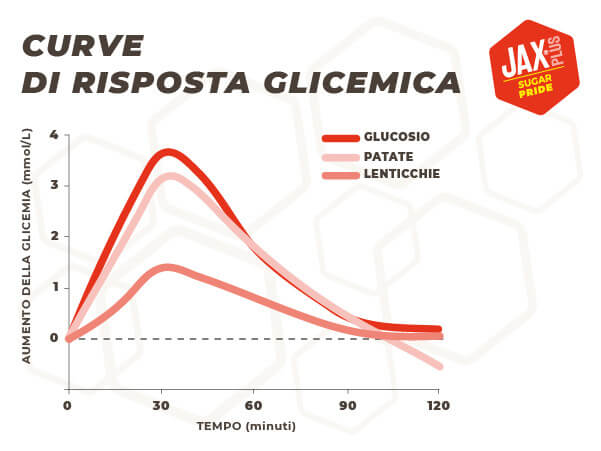
A balanced diet tends to go hand in hand with controlling food glycaemic load (GL). Find out here why GL is different from glycaemic index (GI) and how the latter affects the former.
Glycaemic index lately receives ample attention in discussions about health, while less focus tends to go to glycaemic load. Glycaemic index gains relevance in regard to health, body shape, balanced diet and metabolic diseases such as diabetes. So, what exactly is the glycaemic index, and what is the gist of the story?
The glycaemic indexis a measure of the ability of food carbohydrates to raise blood sugar levels after a meal, compared to a standard represented by glucose(glucose, IG= 100).
How is the glycaemic index calculated?
The GI is expressed as a percentage, calculated by comparing the food under evaluation against a reference standard, that is glucose at the same doses (glucose GI is equal to 100).
Essentially, to establish the GI of a food, a measure is taken of the incremental area under the blood glucose response curve, following ingestion of a food with 50 g of available carbohydrates. This value is compared to the incremental area of the glycaemic curve induced by ingestion of 50 g of glucose (glucose bolus).
This means, for example, a food with GI 50 will have a glycaemic curve with an incremental area halved compared to that of glucose:foods with a low glycaemic index generate lower glycaemic peaks.

Glycaemic load, a comprehensive measure
The glycaemic load (GL) measures the amount of carbohydrates truly consumed, and for this reason is deemed like a more comprehensive parameter, especially when it comes down to assessing the role of certain food as part of a diet. As we know, the bigger the glycaemic impact of a meal, the bigger its impact on our health and well-being.
The GL value is taken by multiplying the GI by the amount of grams of carbohydrates contained in a particular food.
Against the glycaemic peak, soluble fibres
A meal’s glycaemic index, and its glycaemic load, does not depend on carbohydrates alone. There are other elements affecting the speed at which glucose enters into the bloodstream, and soluble fibre is a pivotal example of this. Water-soluble fibresare highly beneficial, viscous by nature and slow down the absorption rate of glucose in the intestine.
They form a sort of physical barrier: this allows to keep blood sugar at a low, constant level for longer and, by doing so, limits insulin production.
JAXplus, a revolutionary selection of fibres
The JAXplus patent allows the selection of fibres (arabinoxylans), particularly effective in reducing the glycaemic peak following digestion and in decreasing insulin stimulation, with noticeable advantages for the metabolic profile in the short and, especially, in the long term.



